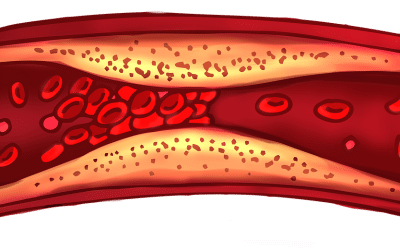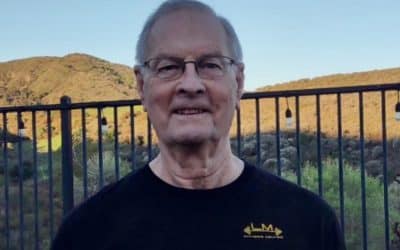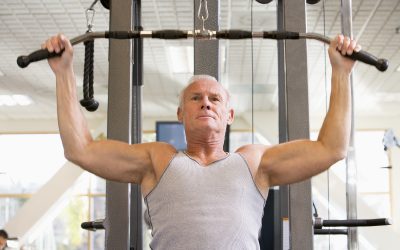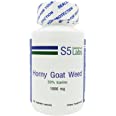Antiaging
Antiaging
Strategy: Learn/Understand the Mechanisms of Aging; Learn how to Minimize their Impact on Our Living
Examination of the Known Mechanisms of Aging, with Antiaging Strategies for slowing and reversing the functional losses due to aging
The Role of Luteolin in Preventing Arterial Plaque
Understanding the mechanisms and potential benefits Arterial plaque, a major contributor to cardiovascular diseases, results from the accumulation of fatty deposits, cholesterol, and cellular waste products in the walls of arteries. Over time, these plaques can...
Enhancing Health-Span: Recommended Ages for Application of Key Strategies
As we age, maintaining and enhancing our health-span—the period of life spent in good health, free from the chronic diseases and disabilities of aging—becomes increasingly significant. Various strategies have emerged as effective tools to bolster the health-span. Four...
THE Critical Lifestyle Factor for Long-Term Health and Longevity
Want to manifest long-term health and live better, longer? Implement the effective strategies I discuss below, and take up Resistance Training for life. Longevity research is in High-Gear and will accelerate from here on. Reported studies promise possible...
Practical Replacement of Mitochondria in Humans for Reversal of Aging Likely in this Decade
Some time ago I reported on the concept that we might be able to raise human mitochondria, like bacteria, in a suitable medium, and use the mitochondrial-rich brew to supply new mitochondria to our living cells, replacing those that have aged and ceased to function...
Update on a Practical Senolytic Therapy to Slow Muscle Loss in Aging
I have written before about using Senolytic Activator from LifeExtension.com to kill off senescent cells. I had been using this strategy on a quarterly basis for about 4 years, and have increased the frequency recently to a monthly schedule. However, there has been...
Live Long – Age Strong!
Live Long; Age Strong! Learn skills to keep your aging body in top shape into your 80s, 90s and beyond! Let me (at 85) show you strategies that work life-long to sustain real long-term Health and Fitness. Train with me twice a week to grow stronger and more energetic...
Make Frank your Personal Trainer at LM Fitness Center Simi Valley CA
Hire me, Frank Wilhelmi, Senior Fitness Specialist, BS, ME, CFT; as your Personal Trainer and I will give you skills to keep an aging body in top shape into your 80s, 90s and beyond? Let me (at 85) show you strategies that work life-long to sustain real long-term...
A newly discovered saturated fat extends the life span of Dolphins
When a single nutrient can add over a decade to a large mammal’s lifespan, we need to pay attention. That is what studies of a newly discovered Essential Fatty Acid revealed in studies of Dolphins trained by the Navy in San Diego CA., when compared to a similarly...
Icariin and Longevity
A recent study (references below) brought to mind that the wide ranging benefits of Icariin on health and function extend to longevity. I take the stuff, from S5 Labs, it is an extract of Horney Goat Weed standardized to 50% Icariins. I take 3 capsules per day; one in...
Restore Strength, Fitness, Function with Frank; Senior Specialist @ Island Health & Fitness, Simi Valley
Hire me, Frank Wilhelmi, Senior Fitness Specialist, BS, ME, CFT, as your Personal Trainer and I will give you skills to keep an aging body in top shape into your 80s, 90s and beyond! Let me (at 83) show you strategies that work life-long to sustain real long-term...
Aging is Not Preventable, Yet!
We all understand that there are activities that can lead to sudden death or maiming, where great (maybe manageable) risk is traded for intensity of feeling. And, on the other hand there are behaviors that lead to isolation, boredom, and a living death. In between those extremes, there is much we can do to maintain our physical and mental capacity, so as to live life to the fullest – and the longest.
I promote Six Pillars of Senior Fitness that are set up as Strategic Topics in the top banner/slider on the home page and again in the Icon Links at mid-page. These topics deal with endeavors, behaviors and actions that we know to enhance our capacity to live life to the fullest. These are: ANTIAGING, EXERCISE, NUTRITION, SLEEP/RECOVERY and RELAXATION, SUPPLEMENTS and THINKING/ATTITUDE. My goal is to keep my readers up to dateon the latest (and the time-tested) information available in these categories. In thisANTIAGING category I detail the known mechanisms of aging and what science is uncovering that will aid us in slowing its progress.
Four major AGING MECHANISMS have come to light in recent years.These are:
GLYCATION – bonding of sugars to proteins (or fats) that stiffens tissues and destroys their function,
INFLAMMATION – a repair process that becomes more prominent, damaging and indiscriminate as we age; our immune system starts to attack our own tissues,
SENESCENCE – human cells stop dividing after about 50 divisions (average – some types fewer, some types more) due to accumulated damage and loss of our chromosome’s telomere length; this shortening with every cell division appears to set our maximum lifespan limit at somewhere near 120 years.
Slowing the aging process is accomplished by doing things that inhibit and repair the damage from these aging mechanisms or slow the rate at which the damage is done. There is hope that specific types of damage can actually be reversed, and we could, in fact, grow younger in some respects.
Oxidative damage:
Endogenous antioxidants: Endogenous antioxidant molecules are enzymes, usually built around certain minerals, and unless you obtain the required minerals through a diet rich in mineral sources, your antioxidant production will be hampered. Selenium is one such mineral, zinc and magnesium are also very important.
Our primary defense against oxidative cellular damage is the co-action of three antioxidant enzymes; Superoxide Dismutase (SOD), Glutathione Peroxidase (GPx) and Catalase (the –ase on the end signifies an enzyme), in defusing potential damage from Reactive Oxygen Species (ROS) within our cells, particularly the Superoxide radical and Hydrogen Peroxide. These enzymes reduce these damaging free radicals to oxygen and water. The key thing to understand is that these enzymes are not destroyed in the process and can do this reaction about one hundred million times per second. This chain of co-acting enzymes operates inside each cell to protect their working parts from the fire of their own energy production.
In contrast, antioxidants such as vitamin C or E require one antioxidant molecule to disarm one free radical at a time, and then go through a lengthy recharging process before being able to help again. These internally-made enzymes are the big guns that second-by-second protect us (our cells) from getting damaged in an instant.
Researchers continue to discover more of these powerful enzymes, and mechanisms that allow their production to be improved. Our issue – our ability to make these primary antioxidant enzymes declines with age and is decreased by poor nutrition. However, recent discoveries have provided tools to maximize our ability to build these protective enzymes – more on this below.
Exogenous antioxidants: The reason vitamin C is so effective at resolving many ills is that we can’t make it. A large dog makes about 10 grams a day, but we and the apes have lost the ability to build it; we have to get it in our diets. It is involved in numerous pathways of free-radical reduction, so for anti-aging purposes we need a plentiful and continuous supply. But taking vitamin C, while necessary, is not sufficient, not the best we can do. We need a bouquet of antioxidants in our diets, and recent discoveries have shown the fruits and vegetables are the primary source for those.
The plant world has developed an array of them for protection against sunlight and other elements of the environment, and nature has cleverly set our bodies up to use them to the fullest when we eat them on a regular basis. The value of taking antioxidants, and eating the foods that are rich in them, is that they partially make up for the decline with age of our own antioxidant production.
How dietary antioxidants improve our endogenous antioxidant production
Nrf2 is a transcription factor that observes the oxidative stress within and outside a cell and then moves to the nucleus of the cell to turn on genes that produce these antioxidant enzymes. Nrf2 is normally bound to a molecule called Keap1, but when the cell is stressed Nrf2 is released and moves to the nucleus where it interacts with the Antioxidant Response Element (ARE) and activates over 200 genes involved in repair, free radical protection and detoxification within the cell. Part of this gene expression results in increased production of these primary antioxidant enzymes.
In addition to this, a number of anti-inflammatory factors are produced that regulate our immune system’s response to our own tissues. Degradation of the Nrf2/ARE pathway’s function are thought to be involved in several degenerative diseases such as Parkinson’s, ALS, Alzheimer’s and multiple sclerosis. The Nrf2/ARE pathway also up-regulates detoxification mechanisms in the liver, enabling removal and elimination of toxins and heavy metals from the body. It protects us from cancer, heart disease, mental decline and inflammatory diseases like arthritis. So a key factor in maintaining health is to keep the Nrf2/ARE pathway running at peak performance.
Wouldn’t it be great if there were substances we could take or eat that would prime or activate these protective systems? Indeed, God (or nature if you please) has provided just what we need; they prove to include the phytochemicals we now think of as antioxidants and anti-inflammatory substances found in healthy foods, particularly those found in colorful vegetables and fruits. These include polyphenols, flavonoids and terpenoids; compounds such as curcumin, ECGC from green tea, resveratrol from grapes, quercetin from onions and apples, sulforaphanes from cruciferous vegetables and probably thousands of others.
The key take-away for this is that our greatest primary cellular protection system is activated (or not) by what we eat. Once again, the foods that grant us this protection are real foods as they come from trees, bushes, vegetables grown in rich soil, fish and animals that eat their natural diet along with their byproducts such as milk and eggs, and unrefined oils and fats, as long as they haven’t been ‘processed’ to give them infinite shelf life.
So dump all the manufactured food ‘products’ you get in boxes, bags and most canned items, margarines, refined vegetable and seed oils, non-dairy creamers, egg beaters and imitation anything; learn to prepare and eat real foods as they come from nature for a long and disease-free life.
Here are some specific foods or extracts that will make a massive difference in your overall longevity and health span:
Resveratrol – highly active primer of the Nrf2 mechanism. Well documented to promote health, longevity and proper weight/fat levels. I use Life Extension’s Optimized Resveratrol, 250 mg and take one/day.
Curcumin – extracted from the spice Tumeric, fights inflammation and pain on several levels, including Nrf2 activation. I use Life Extension’s Super Bio-Curcumin, 400 mg, 2-3/day.
R-Alpha Lipoic Acid – a powerful antioxidant that reaches into every cell in the body and protects membranes, mitochondria and nerve function; a primary defense against neuropathy for those with high blood sugar.
Sulforaphane from Cruciferous (related to cabbage) vegetables – especially broccoli sprout extract. Several elements of these vegetables are involved with multiple mechanism of cellular protection, but sulforaphane in particular is now known to activate Nrf2-mediated antioxidant enzymes. Eat your broccoli, cabbage and cauliflower! If not, take a supplement for sure.
Rosemary – potent primer of Nrf2/ARE pathway via constituent molecules carnosol and carnosic acid. Especially protective of neurons and memory functions of the brain.
EGCG from green tea – this and possibly other constituents of the tea plant activate the Nrf2/ARE pathway.
Ginkgo – has been shown in several studies to protect against DNA damage from radiation. Also reputed to improve brain function and blood flow, but now has been shown to accomplish these benefits by activating the Nrf2/ARE pathway.
Reishi Mushroom – triterpines in these activate the Nrf2/ARE pathway, improving antioxidant status, while polysaccharides restore immune function to youthful levels, lowing inflammation associated with aging. It has strong benefits for lung function, and in fighting bacterial and viral infections. I just added Life Extension’s Reishi Mushroom Complex to my supplement regimen.
Couldn’t we just take these endogenous antioxidant enzymes by mouth? No – they get destroyed in the digestive system. And their production decreases with age, leaving you increasingly susceptible to free-radical damage. The only approach is to convince our bodies to make more of it. The technology now exists to do just that. Read more.
Consumption of antioxidant-rich foods reduces damage to cells and biochemicals from free radicals. This may slow down, prevent, or even reverse certain diseases that result from cellular damage, and appears to slow down the natural aging process. This is the basis for the free-radical theory of aging.
Step one, then, to retard aging is to start eating antioxidant-rich foods and using supplements that foster antioxidant enzyme production to counter the natural decline that occurs with age. It would be helpful to have started this when you were a child, but today is the best day to start otherwise. My favorite product, and the most complete anti-aging formula I have found, is Life Extension Foundation’s Life Extension Mix. Nothing comes even close to its comprehensiveness. It’s not cheap, but I personally think my health is worth it.
Strategy: Eat a wide variety of fresh fruits and vegetables, preferably organic; take a broad-spectrum antioxidant supplement consisting of whole-food extracts rather than synthetic vitamins; take supplements that increase endogenous antioxidant production. All of this together could add 15-20 years to our healthy life span, maybe more.
Glycation/Glycosylation – blood sugar damage:
These protein-sugar molecules eventually become ‘Advanced Glycation End-Products’ or AGEs. AGEs, once formed, are essentially permanent, and tend to stick where they were formed. A cell wall, or whatever part of whatever organ was altered, stays incapacitated for life.
There are mechanisms for removing AGEs that the body uses to heal the damage; they just don’t work as well as we would need to get us into our 100s with youthful vigor under normal living conditions. Two words are used for this process, because glycation is a non-enzymatic reaction (the sugar latches onto a protein on its own power) while glycosylation is enzyme-assisted. Glycosylation is a deliberate process used by the body to form glycoproteins for a multitude of reasons, but sometimes creates a residue that must be eliminated; glycation is a reaction that is always an accident, and a liability of using glucose for fuel.
Very simply, you minimize glycation damage by keeping blood sugar levels low. You can count on the fact that every sugary soda you ever drank has left a mark on you. Every time you pushed your blood sugar above 100 mg/dl, a little bit of extra aging took place. We can keep blood sugar under control by eating smaller meals, by avoiding confections, candy and pastries, by lowering our intake of starchy foods, by eating fibrous vegetables with most meals and by eating whole fruit rather than drinking juices. Watch out for juices labeled ‘drink’ or ‘cocktail’ because they contain various forms of sugar rather than just juices.
The important trick is to get the digestive system to release sugar into the blood stream at a slow rate. Both fiber and fat slow the release of sugar into the blood; that’s why low-fat anything is a usually worse in this regard than the real thing. Low-fat ice cream will spike your blood sugar rapidly, while real ‘iced cream’ will hardly cause a blip even though it has lots of sugar. Make desserts rare treats, and eat them only when your stomach is already working on real foods. Eat small; never/rarely eat until uncomfortably full and eat real, whole foods.
Many supplements are available to down-regulate chronic high blood sugar: the mineral chromium, alpha-lipoic acid, cinnamon extract, corosolic acid, grape-seed extract, the herbs Gymnema Sylvestre, Vaccinium myrtillus (Bilberry) and Galega officinalis (which is protective of the pancreas), are all helpful. However, the real trick is diet, and the elimination of those foods that raise blood sugar appreciably.
The unseen side of this controversy is insulin level. If you are insulin-resistant, you MAY have normal blood sugar levels AND have chronically high insulin levels. It has now been shown that insulin itself is inflammation-promoting and contributes to the rapid aging of many tissues. The combination of high blood sugar and high insulin is the fast track to rapid aging. The only proven strategy to life extension to date is caloric restriction; many researchers now believe that much of that result is simply due to blood sugar restriction accompanied by sustained low baseline insulin levels. A really good reference can be found at Dr. Mercola’s site.
Strategy: Eat smaller meals spaced 5-6 hours apart and no snacks between meals (drink a big glass of cold water when you feel hunger – it will quickly kill hunger AND make you burn 100 calories or so to heat the water in your gut); eat nothing after dinner, go to bed on an empty stomach; get off grain-based and starchy food “products” which raise blood sugar and insulin; eliminate sugar-based drinks and sodas; forget desserts and sweets most of the time. Read our Nutrition Category for much more information.
Inflammation:
Inflammation in all the body’s tissues increases, in general, as we age. Why this is true is not well understood, but inflammation seems to be a common property and possible underlying cause of many of the chronic diseases that afflict the aging. Inflammation is also one of the mechanisms used by the immune system to fight invaders and heal injury, so it is almost as though the aging body increasingly sees its own tissues as an enemy or that there is a chronic state of injury that needs constant attention to promote healing. Chronic inflammatory processes eventually become the source of much of the damage evident in the aging body. Inflammation is the key initiating factor in major degenerative diseases. In fact, some scientists estimate that inflammation underlies up to 98% of the diseases afflicting humans, including a vast array of seemingly different conditions such as cancer, heart disease, diabetes, and neurodegenerative disorders. We talked above about elevated insulin as inflammatory, but there are several other known factors that promote inflammation.One prominent factor is nuclear factor-kappa beta or NFkB.
NFkB is a protein that acts as a switch to turn inflammation on and off in the body. Scientists describe NFkB as a “smoke sensor” that detects dangerous threats like free radicals and infectious agents. In response to these threats, NFkB “turns on” the genes that produce inflammation. As we age, NFkB expression in the body increases, provoking widespread chronic inflammation and setting the stage for diseases ranging from atherosclerosis and diabetes to Alzheimer’s. Knowing this simple fact should motivate us to find ways to counteract NFkB’s deleterious effects and thus delay or avoid many of the diseases commonly associated with aging. Follow this link to a very informative article that details the effective dietary ways to lower NFkB’s level and its impact– a ‘must read’ if you want to understand how to deal with inflammation. Virtually all the measures cited in this article to lower NFkB reduce the other important causes of inflammation.
People suffering from chronic disease often have elevated levels of C- reactive protein (or CRP) in their blood. C-reactive protein indicates an inflammatory process is going on in the body, but does not identify the specific pro-inflammatory cytokine that may be the underlying cause. Some of the important inflammatory cytokines are: Tumor necrosis factor alpha (TNF-a), Interleukin-1 beta (IL-1b), Interleukin-6 (IL-6) and Interleukin-8 (IL-8). Testing for pro-inflammatory cytokines has been prohibitively expensive because there has been so little demand for it. Recently, the Life Extension Foundation spent more than a year establishing a relationship with the largest blood-testing laboratory in the United States to offer an Inflammatory Cytokine Profile at an affordable price. (Currently $399.00 for Members) If you are elderly, or suffer from any serious disorder, these cytokine tests can enable your doctor to prescribe therapies that specifically target the inflammatory cytokine responsible for your poor state of health.
Another general cause of inflammation is a class of immune-system by-products referred to as immune complexes or ICs. ICs can be either circulating (in the blood or lymphatic systems) or tissue-bound. These immune complexes, which consist of an antigen bound to an antibody, are a normal part of the immune response. But when immune complexes occur in excess, they are a principal cause of certain kidney diseases, nerve inflammation, and a number of rheumatologic diseases, including rheumatoid arthritis.
Circulating ICs are associated with rapid local or systemic reactions such as asthma attacks and hives, while tissue-bound ICs promote chronic inflammation responses such as seen in atherosclerosis, arthritis, tendonitis and for that matter, any such -itis.
We now understand that AGEs are also targets of immune cells, and like ICs are a cause of rising inflammation with age – as our immune system sees these AGEs like invaders that need to be killed. Evidence suggests that trypsin, papain, and particularly, broad-spectrum combinations of proteolytic enzymes, can break up existing pathogenic immune complexes and even prevent their formation in the first place, enhancing lymphatic drainage and blood flow.
Periodic use of enteric-coated enzyme formulations promotes a regulatory effect on the immune system that lowers inflammation levels throughout the body and reduces or eliminates sources of chronic pain. These proteolytic enzyme products, if taken in larger doses, are effective at remodeling scar tissue and damaged connective tissue; tendons, ligaments, fascia, and even bone, eliminating fibrosis, and reforming these tissues to eliminate chronic pain.
Senescence:
Most human cells can replicate or divide about 50 times, then they change characteristics and function and stop dividing. Some will self-destruct, a process called apoptosis (ap-o-toe-sis). Others do not divide after maturation, such as neurons. They can be replaced by stem cell activation, but the predominant impact on aging is the shutting down of cell function after appropriate division to replenish lost comrades. A number of factors can initiate cell senescence:
- Loss of chromosome telomere length
- Stress conditions
- Cellular damage from Oxidation, Glycation and Inflammation
- Cancer-causing environmental elements
- Chromosome instability (cells with sufficient damage can divide incorrectly, cross-mixing chromosomes during mitosis)
- Mitochondrial damage/wear out
When a cell becomes senescent it no longer acts like a young cell: it no longer does self-repair, produces almost no energy (ATP), no longer divides to multiply its function. There are mechanisms (Autophagy) that take apart such cells to reuse their parts, but as more cells become senescent this process slows, moving us toward faster aging.
When we are young, our immune system kills and removes senescent cells. As we age, some of these cells are missed and become a source of pro-inflammatory signalling; emitting several cytokines that coax other cells to become senescent, creating a cascade of increasing inflammation in what is referred to as Senescence-associated secretory phenotype (SASP). This process is now considered a mechanism of accelerated aging and leads to terminal decline of health. It is associated with nearly all diseases of aging.
Much of antiaging research is now aimed at designing protocols to kill off senescent cells, which has been shown to virtually reverse aging.
Two other promising areas where we can improve cell longevity are maintaining mitochondrial fitness and restoring telomere length.
Mitochondrial fitness – these are the power houses of cells and convert food into Adenosine Tri-Phosphate (ATP), the energy currency for nearly all chemical/mechanical processes in the body. Mitochondrial health is primarily based on quenching the free radicals generated within them by their energy-producing mechanism. It’s a lot like keeping the walls of a rocket motor from melting by running coolant through the walls. But in this case the mitochondria are cooled by internal antioxidant enzymes that sop up the free radicals as fast as they are generated.
Some years ago a company named Geron developed a modified extract of the herb Astragalus that turned on the expression of the gene for making telomerase in mammals. Telomerase repairs the length of telomeres and has the potential to extend our healthy life span. They subsequently licensed it to TA Sciences, who brought it to market and are selling it for use in humans under doctor’s care. The most notable doctor working with TA-65 is Dr. Al Sears. It is also available at this site at a reasonable price: TA-65 from Professional Supplement Center. This is a Cadillac of supplements – quite expensive, and the long term results are not known at this time. But so far it looks very good. (update July 2019: lots of studies being done with TA-65, prices have come down, and outcomes are looking quite positive with regard to health-span. Fears of promoting cancer with boosted expression of telomerase are fading with testing progress).
Other factors may be revealed in the future, and the mechanisms will be better understood in time, but as it is, senescence is the basket term for cells wearing out, and is thought to define the maximum lifespan of the species. It is complicated and not fully understood. For example, mice have longer telomeres than humans, but live far shorter lives. All of the aging mechanisms discussed above drive cells toward senescence and shorten their lifespan, so adhering to the strategies above will help. The only known practice to promote significant increase in longevity is caloric restriction. The most important single habit to form is eating modestly! But, recent studies have demonstrated that Resveratrol, vitamin D and Quercetin all turn on the same genes associated with longevity that are activated by caloric restriction. Very Important – telomeres shorten more rapidly in sedentary bodies than in physically active bodies. Physical activity is critical to longevity.
Much research is being done to A) find strategies to kill senescent cell as they occur, or B) prevent them from entering the SASP mode. Personally, I favor the kill-them-off approach, along with coaxing stem cells to replace them. This promises to potentially add several decades to our health span.
Several natural compounds found in foods and herbs are being examined for their ability to kill senescent cells, and of these, Quercetin, Fisetin and Curcumin are among the most potent Senolytic compounds. Pharmaceutical companies are working to formulate patented drugs that accomplish these ends.
Summary: Slowing the aging process is accomplished by doing things that inhibit the damage from these aging mechanisms or slow the rate at which the damage is done. In some cases there is hope that specific types of damage can actually be reversed, and we could, in fact, grow younger in some respects. A work in process; more to come.









